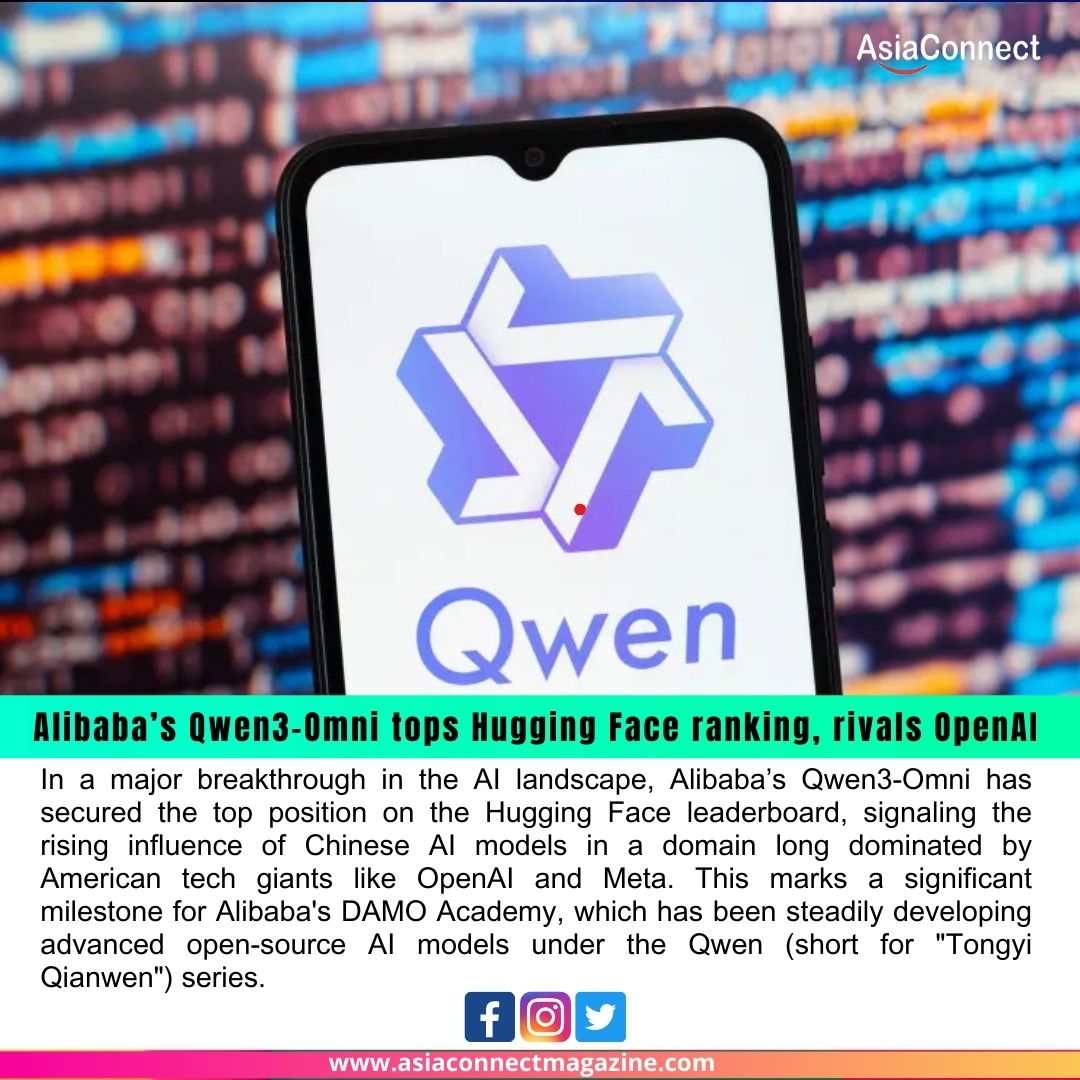In a major breakthrough in the AI landscape, Alibaba’s Qwen3-Omni has secured the top position on the Hugging Face leaderboard, signaling the rising influence of Chinese AI models in a domain long dominated by American tech giants like OpenAI and Meta. This marks a significant milestone for Alibaba’s DAMO Academy, which has been steadily developing advanced open-source AI models under the Qwen (short for “Tongyi Qianwen”) series.
The Qwen3-Omni-30B-A3B variant has emerged as the most popular model on Hugging Face, the world’s leading AI model repository. Closely trailing it is another model from the same family — Qwen-Image-Edit-2509, which specializes in image editing tasks using advanced multimodal capabilities.
What Is Qwen3-Omni?
Qwen3-Omni is a multimodal large language model (MLLM), capable of understanding and generating both text and visual content. Its design is similar in ambition to OpenAI’s GPT-4o and Meta’s LLaVA, aiming to provide seamless input-output experiences across modalities. This includes answering questions, editing images, generating stories, coding, and performing other generative tasks with high levels of accuracy and context awareness.
The “30B-A3B” in the top model’s name refers to the 30 billion parameter architecture using Alibaba’s proprietary A3B quantization, which makes the model more efficient in terms of memory and performance — ideal for enterprise-level deployment and research applications.
Popularity Surge on Hugging Face
Alibaba’s Qwen3-Omni models are not just technically advanced — they’re also attracting a massive developer and researcher following. According to Hugging Face, Qwen3-Omni-30B-A3B has become the most downloaded and interacted-with model, surpassing even Meta’s LLaMA series and OpenAI-backed models hosted through APIs or integrations.
The rise in popularity can be attributed to:
- Strong multilingual capabilities, especially in Mandarin and English
- Open-source availability under permissive licenses
- High benchmark scores on reasoning, summarization, code generation, and image-text tasks
- Compatibility with leading AI frameworks like Transformers, ONNX, and PyTorch
Qwen’s Competitive Edge Over OpenAI
While OpenAI’s GPT-4 and GPT-4o remain powerful, they are not fully open-source, limiting community-level experimentation. Alibaba’s Qwen models offer open weights, allowing greater transparency, customization, and deployment flexibility, particularly for enterprises, researchers, and startups that prioritize data control.
Qwen3-Omni also excels in image editing and understanding, as seen with the Qwen-Image-Edit-2509, its runner-up model on Hugging Face. This aligns with the growing demand for multimodal AI systems that can bridge the gap between text and visuals — especially in industries like e-commerce, content creation, and customer support.
The Bigger Picture
Alibaba’s rapid ascent on Hugging Face not only showcases its technical prowess but also reflects China’s increasing competitiveness in generative AI. With Qwen3-Omni taking the lead, the future of open-source AI is becoming more diverse, global, and democratized.
As the race between OpenAI, Meta, Google, and Alibaba heats up, the real winners may well be developers, researchers, and enterprises who now have more powerful and accessible tools than ever before.
Keywords: Alibaba Qwen3-Omni, Hugging Face top model, Qwen3-Omni-30B-A3B, Qwen-Image-Edit-2509, Alibaba AI model, Hugging Face ranking, OpenAI rival, multimodal AI model, best AI model 2025, open-source large language model, Qwen vs GPT-4, Chinese AI models





